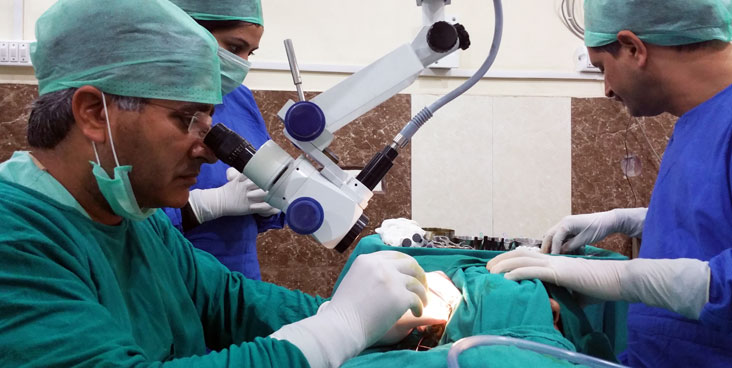Phonosurgery

The term Phonosurgery denotes restoration of Voice by using various surgical techniques. The melody of human voice depends on the vocal ligament an elastic structure of the vocal folds, which is not present in any other species. So there is no experimental model for human voice.
Human voice acts as a primary instrument to project our personalities in the society. Voice problems may arise from laryngeal or systemic disease or trauma or misuse. The result of voice dysfunction is sometimes dewasting, endanger the life of professional voice users like singers, actors, politicians, educators etc.
Many people, suffering from voice disorders live desperately in society with the opinion that no proper treatment is available for their problems. In fact invention of phonosurgical techniques has created a ray of hope for such victims of voice disorders.
Voice problems may be of congenital, traumatic, inflammatory, neoplastic, neurological or functional origin. The diagnosis of voice disorders starts with detailed history from the patient and indirect laryngoscopic examination by the otolaryngologist. For a long time perceptual voice analysis (by hearing the patients voice and judging its quality) has been a basic tool in deciding the prognosis of the patients. Recently computerised objective voice analysis methods like voice spectrograms electroglottography, phonotograms etc are gaining importance in judging the prognosis and also for documentation. The invention of video laryngoscopy, and videolaryngostroboscopy techniques have made diagnosis more precise in the voice care.
The management of voice disorders is a team work consisting of otolaryngologist, speech pathologist, Voice coach, psychiatrist, and sometimes plastic surgeons and pediatricians etc.
The voice disorders may be of functional or organic (eg.vocal nodules) orgin, and it is sometimes difficult to demarkate between these two as one may predispose the other. Voice therapy plays a greater role in the correction of most of the functional voice disorders which form 80% of voice problems. It also acts as an important adjuvant treatment modality before and after voice surgery or phonosurgery.
